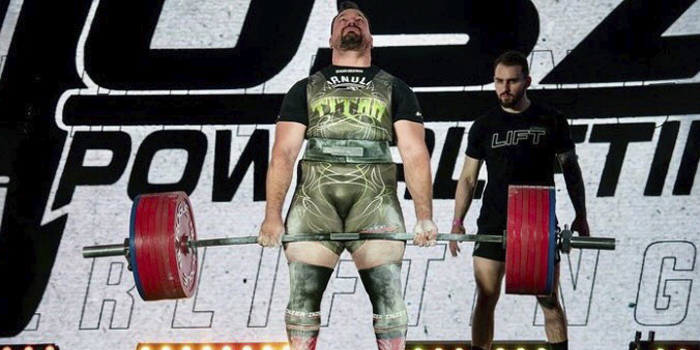
The number one aspect I cover with any beginning, intermediate, or advanced powerlifter is technique work on their deadlift, whether it be sumo or conventional.
To this date, we have been able to directly produce over 30 American Records, 2 World Records, and 7 International World Medals, including 4 Gold Medals, all in the deadlift from our grassroots strength program. We use conventional sumo and deadlift training in our routines and have had a very high success rate at each.
Unfortunately, I attained several poor deadlift habits early on due to a lack of coaching. I had to constantly modify my technique and training program as best as I could en route to my own personal best deadlift of 782 pounds at a body weight of 220 pounds. It was a struggle, to say the least.
Now, I use my trials and tribulations as a foundation to coach my clients and athletes; I want them to understand how important it is to establish strong habits from the start, no matter how frustrating it may be to them initially. I often tell people that when they begin working with me, we will most likely have to reduce their deadlift training numbers for a little bit to fully enhance their potential to deadlift the heaviest weights later on. This is no easy task for most people who walk into the gym as a majority are looking for a quick fix and almost immediate improvement in numbers on their training.
The deadlift checklist below will most likely make you take a small step back on your training numbers, but later on will prove invaluable in setting PRs, and attaining deadlift longevity.
The Checklist
YouTube
Shoulders In-Line or Behind The Barbell to Start The Lift
Always push the deadlift up with leg drive and pull it back slightly while bringing your hips forward into the barbell. Great deadlifters often pull on the barbell to set their shoulders and create stiffness throughout their entire body before beginning the lift. Conventional deadlifters might be able to get away with shoulders slightly over the bar, but sumo deadlifters have a less forgiving technique. This is absolutely necessary whether you pull on a stiff bar or a specific deadlift bar.
Thankfully, Ed Coan worked on my deadlift throughout the years, drilling this cue into my form. I can’t thank him enough for his time, as it greatly enhanced my start position and made my sticking point (mid-thigh) that much easier to grind through.
YouTube
Shin Angle
A vertical shin angle is an absolute must for sumo deadlifts, while knees inline with toes and not over them work well with conventional deadlifts. Learning to sit your hips back into your deadlifts is most advantageous for either way to deadlift to get a proper shin angle. I often teach a box squat or rack squat first with beginners or intermediate lifters when they want to learn how to deadlift, as they rely too much on their quads for deadlifting and don’t know how to push their hips back and use their backside.
I was able to work with Vince Anello (the first man in powerlifting history to deadlift over 800 pounds while weighing under 200 pounds) after I got my start in powerlifting. He forced me to work on my shin angle until it really clicked. Vince and I both relied heavily on our back strength for the deadlift. He had a body structure like no other, but utilizing proper leg drive in either stance will provide your back and hips with enough strength to lockout a heavyweight early on.
RECENT: When Grips Did Not Give
If you sprint the first few laps of a mile very hard, you will undoubtedly not have enough strength left to finish in the best place you could have had you used a better start. The same goes for deadlifting and learning to utilize your leg strength more efficiently from the beginning. You will have a lot more back overall body strength left to finish the lift and not have a soft or as difficult lockout.
YouTube
Hips In Close to The Barbell
I use the term “crowding the bar” as much as possible. And while you are trying to pull the slack out of the bar, sit your hips back some; you must also keep everything close and tight to the barbell as much as possible.
Two months before Louie Simmons passed away, he invited me and one of my best female deadlifters to come down and train at Westside Barbell. Louie and I had a great relationship over the last 20 years, and he always welcomed me down personally and any of my sport or powerlifting athletes. My 23-year-old lifter, Shelby Miles, was currently sumo deadlifting 486 pounds raw at 198 pounds body weight when going down to train with Louie.
Shelby was having trouble finishing deadlifts around 500 pounds, and Louie’s main technical emphasis was that I had her sitting her hips too far back on her deadlifts. While her shoulder alignment, shin angle, and overall strength positioning and technique looked great, her hips were pushed too far back, and it took her too long to finish maximum strength deadlifts with that technique. Louie cued her to push her chest up more (so he could read the full writing on her shirt) and to pull her hips into the barbell hard and tight. This took a lot of practice, but eventually, over a few months, Shelby could put this technique into her strength training and easily deadlifted 501 pounds in competition.
The combination of setting her shoulders behind the bar, vertical shin alignment, and bringing her hips in closer to the bar made the lift look effortless. Stay tuned for part 2 of this deadlift series, where we discuss specifically about common faults and how to fix them.

Jeremy Hartman is a licensed teacher, high school strength and conditioning coach, and powerlifting coach in Indianapolis, Indiana. Jeremy has coached at one of the best athletic schools in the state, along with the Indiana National Guard and their physical fitness instructors.
As a competitive powerlifter, he has represented the United States in three different countries and is a multiple-time national champion and world championship medalist. He is the only coach in USA Powerlifting to have directly produced three world powerlifting team members and three bench-only world team members in the same calendar year. Jeremy's powerlifting athletes have set eight world records and more than forty U.S. American Records. He has won at least one state championship at all three of his high school programs, where he oversaw the strength training of various sports.
Jeremy spoke at the 2022 elitefts SWIS Symposium in Columbus, Ohio.










